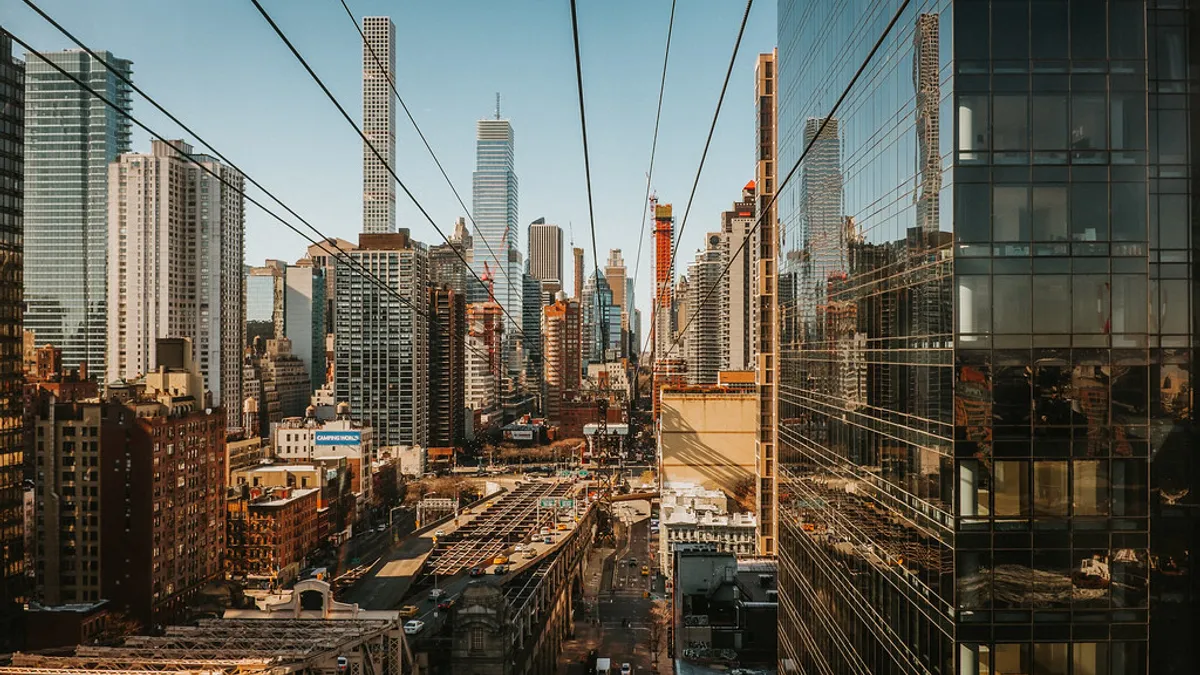Dive Brief:
- The City of New York will start deep energy retrofits on nine city facilities, with the goal to reduce energy usage by at least 50%. Another 28 facilities will be audited for future retrofits.
- The retrofits follow the passage of the Climate Mobilization Act last spring, which set a goal to reduce government operation emissions 50% by 2030.
- Deep energy retrofits require a whole-building approach, including improvements to building insulation, designs to improve natural daylight, upgrading electric fixtures, and automating heating and cooling systems. The nine projects selected by the city will be completed by 2025.
Dive Insight:
The city's Climate Mobilization Act set a landmark goal by requiring buildings over 25,000 square feet to cut climate emissions 40% by 2030 and more than 80% by 2050. That goal, the most stringent in the nation, was targeted as one of the city's biggest sources of electricity, especially with the older building stock. It will force building owners to undertake the kind of deep retrofits the city is modeling, or face fines if they do not hit certain benchmarks.
While many cities have targeted buildings as a way to cut energy use and carbon emissions, New York's strategy is significant for putting the burden on building owners and requiring such large reductions. That will require many building owners to go beyond just modifying HVAC systems or changing lighting systems, and instead look at design features, windows and rooftops.
The retrofits announced by Mayor Bill de Blasio will set the path forward for all building owners to follow suit, John Mandyck, CEO of the New York-based nonprofit Urban Green Council, told Smart Cities Dive. Not only will the city be able to show what strategies are effective to make buildings greener, but the city is also tackling a diverse set of projects in its first round of retrofits, according to Mandyck.
"One of the challenges is that no two buildings are alike," he said. "You need a different strategy for a museum than for a residential structure. We're going to get a full suite of lessons from these projects."
Among the buildings selected were a city parking garage, the DCLA Brooklyn Museum, a school and two family residences. The Department of Citywide Administrative Services will also begin auditing other buildings, including public schools, hospital facilities and office buildings to identify more targets for deep energy retrofitting.
As cities work to reduce their carbon emissions, including to meet the goals of the Paris climate change agreement, governments are looking to buildings as a major target. San Francisco, for example, says it will power large commercial buildings with renewable energy by 2030, and cities like Chicago and Pittsburgh have explored building energy reduction mandates or similar renewable requirements.















